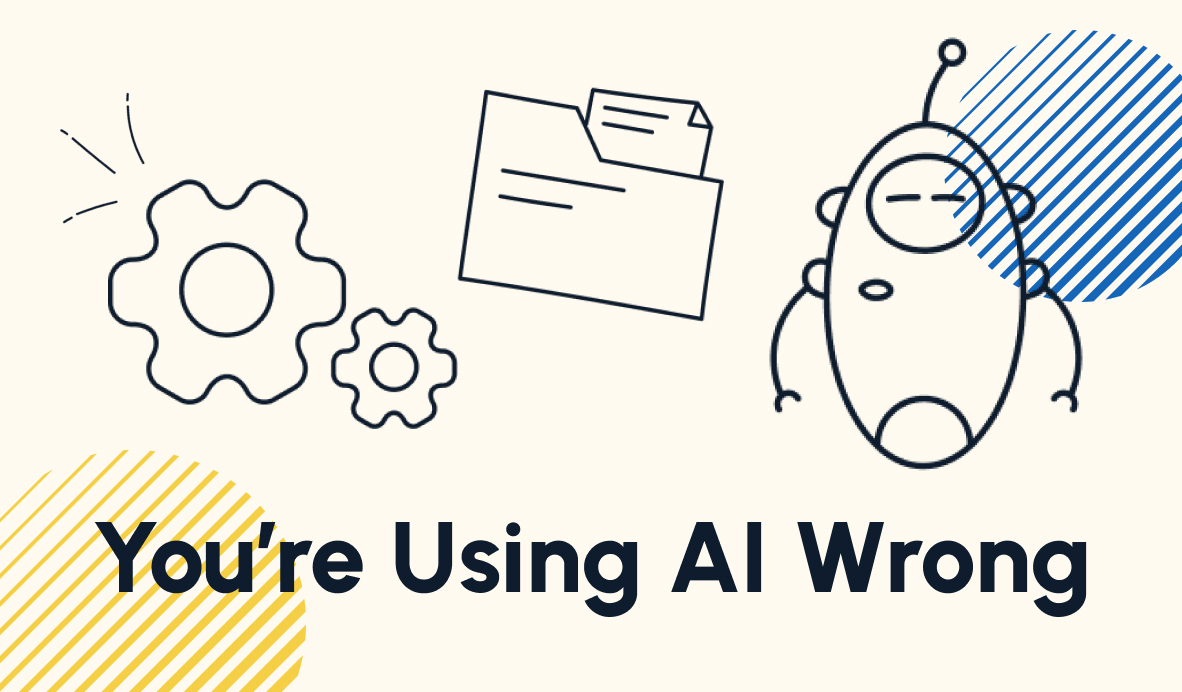Clarifying Common Misconceptions About Automation
There are many misconceptions about workflow automation and what it means for your company. In this post, we'll address 5 of the most common automation myths and set the record straight.
July 13, 2022

Automation is growing fast. Businesses in every industry are adopting automation as they look for ways to become more efficient.
As more and more people are using automation and talking about it, there’s also quite a bit of misinformation and misconceptions going around.
In this post, we’ll address five of the most common automation myths that we’ve heard at XRay, and explain how automation really works.
Myth #1: Automation is About Downsizing
Automation is not about firing people and replacing them with a few lines of code.
Good automation is focused on supporting people, not replacing them. Workflow automation eliminates tedious robotic tasks, but it doesn’t take away your responsibilities.
If an automation is built the right way, it will always include some vital human checkpoints. Human checkpoints are Critical moments in a workflow where you or your team can review what the automation is doing and choose whether or not to proceed.
By automating robotic tasks and maintaining human oversight, well-designed automations amplify the output of your team so they can accomplish more. They don’t eliminate the need for human involvement and human judgment.
Myth #2: Anything can be automated
While you can automate a staggering array of workflows and applications, the truth is that not every process can - or should - be automated.
You can only automate robotic tasks; tasks that don’t require human creativity, analysis, strategy, or thoughtfulness. For instance, you can’t automate the design and development of an entire website. But you can still automate the creation of a web page based on a template.
Automation excels at performing repetitive, mindless tasks. Anything that essentially boils down to copying data from one spot and pasting it into another is an ideal candidate for automation.
On the other hand, anything that requires human ingenuity can’t be completely automated, which is where those human checkpoints we referred to earlier come into play.
You may be able to automate certain steps of creative or analytical processes, but you’ll still need a human running the show.
Myth #3: Automation reduces quality of Output
A good automation doesn’t result in a worse output.
It’s understandable that you may be afraid of one-size-fits-all automations ruining your workflows. We’ve all had horrible experiences with automated customer support, and you might think that no-code automation would face similar issues.
But while simplistic and poorly built automations might not deliver the quality you’re looking for, a well-built automation can accommodate all sorts of different scenarios and inputs.
In some cases, your workflow may be too complicated to automate - as we just mentioned while addressing Myth #2, not everything can be automated.
But if you can automate a process, the result will actually be more consistent.
An automation won’t forget to perform certain tasks, or make simple mistakes like typos. It will perform the workflow the exact same way every time, with a reliability that you could never expect from a person.
As with any software, there will be some technical errors every now and again, but these won’t be frequent. And ultimately, it will be far easier to notice and fix an automated error than it would be to discover and address each unique human error.
If you’re worried that automation will result in a lower quality output, you can rest easy. With well-designed automation, you can actually look forward to more consistency and reliability, without sacrificing quality.
Myth #4: Automation Limits the Tools You Can Use
Next, let’s tackle one of the most inaccurate myths we often come across: that automation limits the software tools you can use.
In most cases, this just isn’t true.
The beauty of no-code and low-code automation is that it works with nearly any software stack imaginable. Platforms like Zapier and Make support thousands of apps right out of the box, including the most popular and useful software out there.
Even if your apps aren’t natively supported, you can always create custom integrations for them as long as they have an API - and most modern software does. Apart from some very rare exceptions, you can use whatever tools you want with automation.
Myth #5: Automation is Cheap OR Automation is Expensive
Finally, we’re going to cover two closely related automation myths: that automation is very cheap, AND that automation is very expensive.
In our experience at XRay, many people aren’t sure what to expect when it comes to the cost of automation.
In some cases, people think that automation is as cheap as a small monthly subscription.In other instances, people are worried that they’ll be spending as much on automation as they would on a fully custom piece of software.
While both extremes might be true under certain circumstances, the reality is that automation typically comes at a moderate cost - but brings massive benefits for every dollar you spend.
A small monthly subscription is all you need to get started with Zapier or Make, but if you want to really transform your business with automation, you’ll either need to spend a lot of your team’s time on building automations, or you’ll need to work with a company like XRay.
In general, we help companies to automate their workflows for about the cost of one employee’s salary annually. For this price, we provide our entire team’s diverse expertise and build automated systems that support every department at your company.
If you were to try to hire similar talent, you’d probably need to bring several new staff members on board.
So while automation can require a significant investment, the return is more than worth it.
What You Can Really Expect from Automation
That concludes our rundown of the top automation myths. To sum it up:
• Automation is NOT about downsizing;
• NOT everything can be automated;
• Automation WON’T reduce the quality of your team’s output;
• You CAN automate with nearly any modern software;
• And finally, automation isn’t dirt cheap, but like most things, you get what you pay for.
If you’d like to learn more about how no-code automation can transform your business, check out our blog or our YouTube channel. You can also follow XRay on Twitter, Facebook, or LinkedIn.













